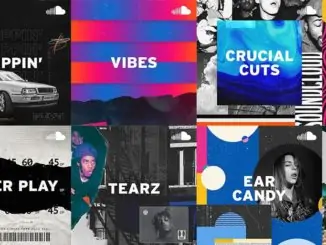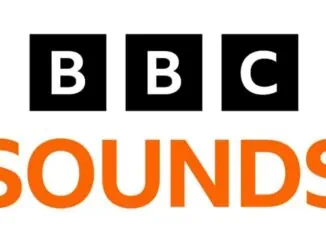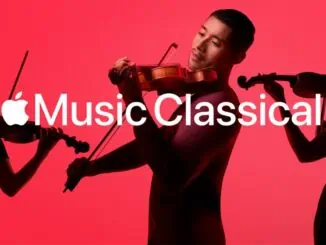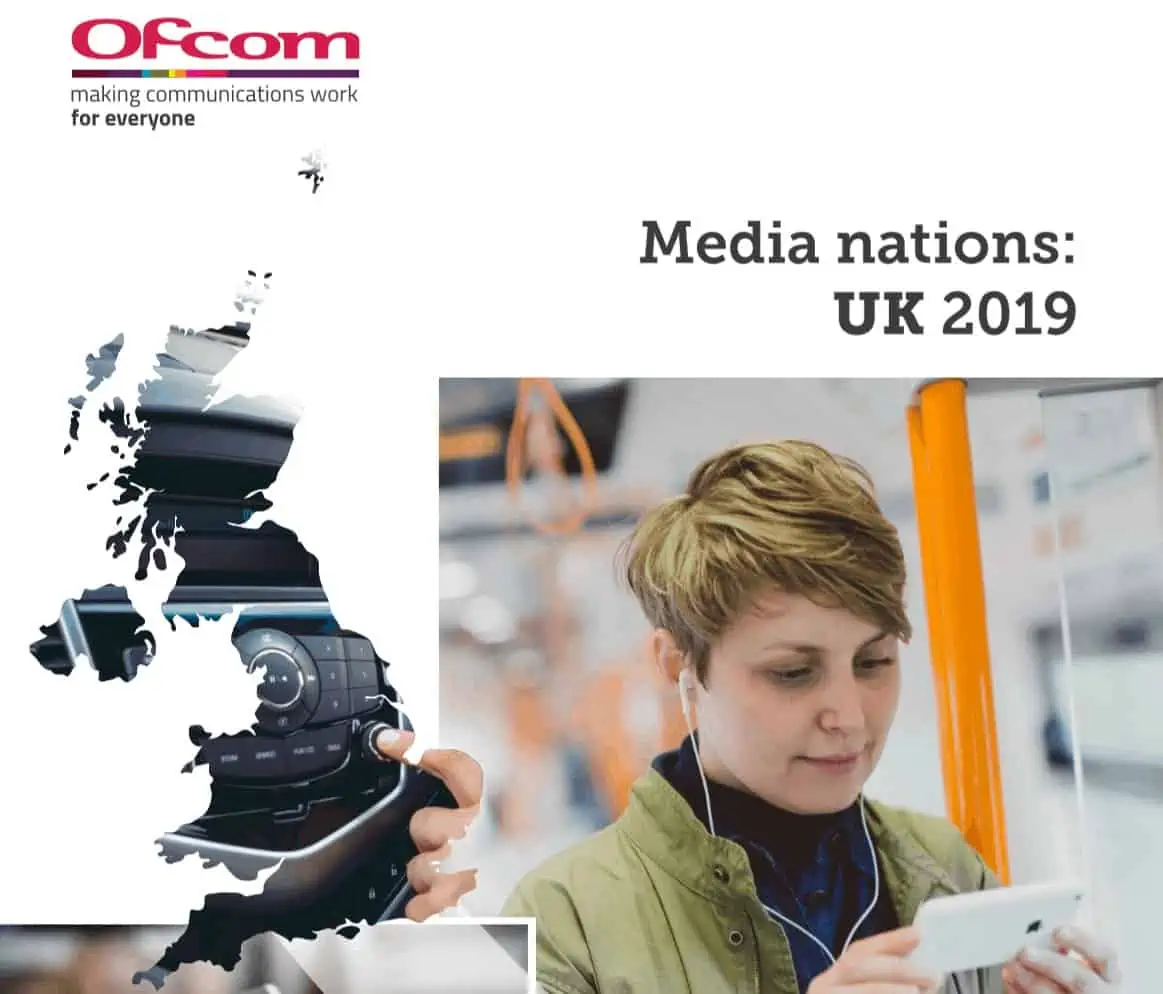
UK’s broadcasting media regulator Ofcom publishes Media Nations: UK 2019 report containing statistics and trends in the television and online video sectors as well as the radio and other audio sectors. The 107-page report is Ofcom’s second annual Media Nations report and in addition to the UK has separate reports for Northern Ireland, Scotland and Wales.
Media Nations: UK 2019 is a reference publication for industry, policy makers, academics and consumers and is broken down into four chapters:
- Total video
- Broadcast TV and Public Service Broadcasting
- Online video
- Radio and audio
This post contains the key elements of the Radio and audio chapter executive summary but for those who wish to read the full report it is a free download here.
Radio and audio
Radio listening and revenues are holding up
Live radio remains popular, with listening to UK-wide commercial stations particularly strong. In Q1 2019, 89% of UK adults listened to at least five minutes of live radio each week. This varies by age: 90% of over-64s listened each week compared to only 80% of 15-24s (down from 88% ten years ago).
Commercial radio revenues remained resilient in 2018. Total revenues remained the same year on year, as increases in both national advertising and sponsorship offset a fall in reported local advertising revenues.

Digital radio continues to grow
The overall digital share of listening across the UK continues to grow and now stands at 56% in Q1 2019, up from 53% in Q4 2018. This includes digital audio broadcasting (DAB), online (which is an increasingly important factor) and TV set listening.
DAB remains the most commonly used digital radio platform, but popularity of smart speakers is growing rapidly. The proportion of adults with a DAB set grew to 67% in Q1 2019 from 64% in Q1 2018. Listening via a mobile phone has also fallen. The largest growth is in listening online, perhaps driven by the increased take-up of smart speakers – listening to the radio on a smart speaker increased from 10% of adults in 2018 to 19% in 2019.
DAB digital radio coverage continues to increase
Following the build-out of the Sound Digital multiplex, digital radio can now be received by 83% of households and offers 73% coverage on major roads around the UK. The total number of services carried across local DAB multiplexes increased by 39 to 447 by the end of March 2019.
But there are challenges for radio to focus on, with young people spending more time listening to online music streaming services
Local radio has gradually been losing out to UK-wide radio
In Q1 2019 just over half of adults (54% compared to 59% five years ago) listen to local radio and 73% (70% five years ago) listen to national output. Local commercial radio stations are spread across the age spectrum and BBC local services largely have older listeners.
Listeners have more choice of content and access, and young people in particular are spending more time listening to online services. Almost three-quarters of adult weekly listening is to radio (live, on-demand or radio podcasts). However, 41% of young people’s audio time is spent on music streaming services and less than a third of their time is spent listening to radio.
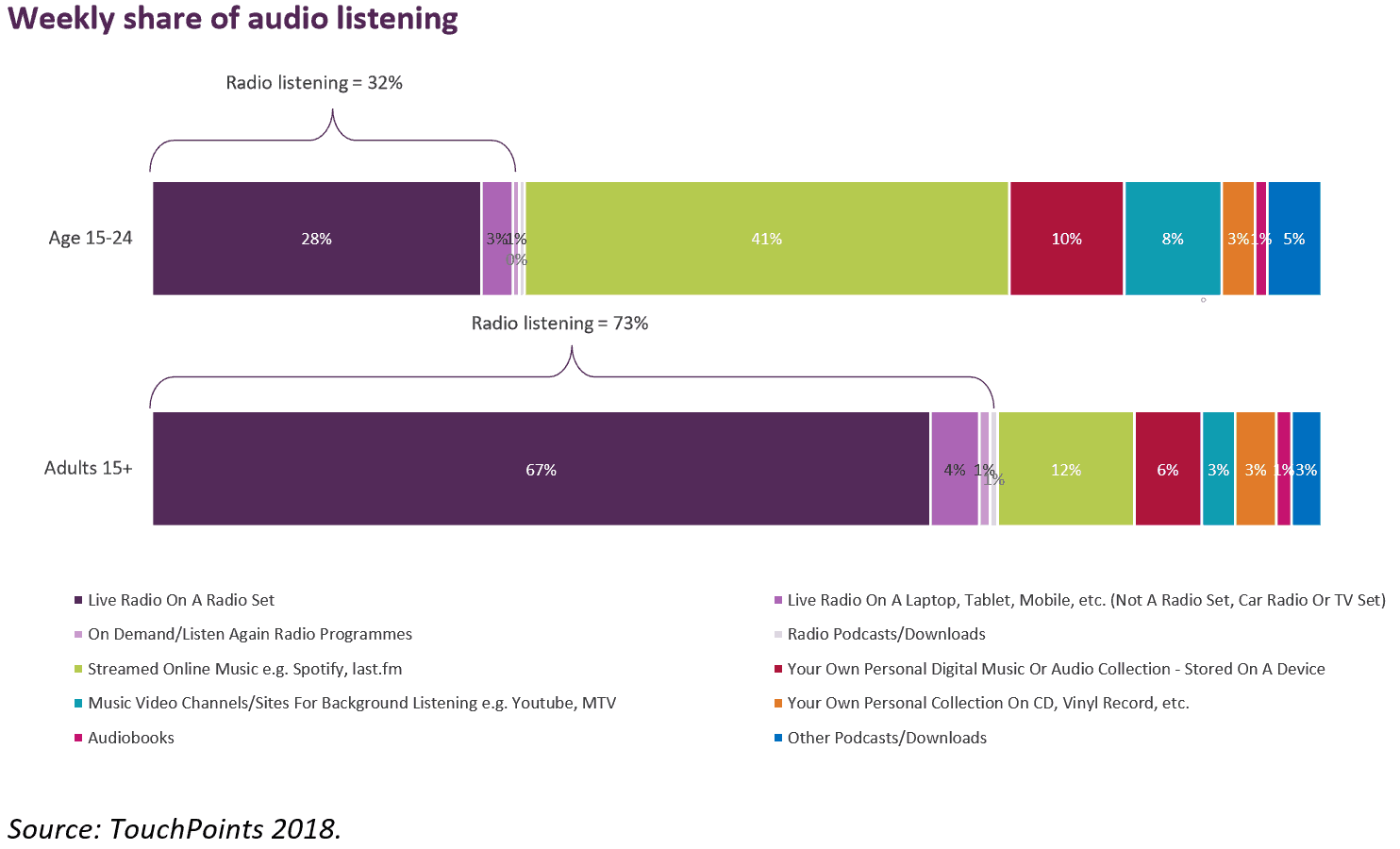
Podcast listening is becoming more popular
Podcasts represent only a small share of listening but are increasingly popular. One in eight adults now listen to podcasts each week. The average age of a weekly podcast listener is 39, around ten years younger than a typical radio listener. YouTube is the platform most used to access podcasts among weekly listeners; these are video podcasts and are particularly popular among the 35-54 age group. The most used audio-only service for weekly podcast listeners is BBC iPlayer Radio and is particularly popular among older podcast listeners. However, for younger podcast listeners, Spotify and Apple are more likely to be used than individual BBC services.
Streaming is most popular on smart speakers
The rapid take-up of smart speakers is both an opportunity and a threat for radio broadcasters. 20% of UK households now own a smart speaker such as an Amazon Echo, Google Home or Apple HomePod. The most common use of smart speakers is to listen to music via a streaming service (69%) while 56% listen to live radio and 22% to podcasts.
Streaming subscriptions overshadow commercial radio revenues
Music streaming subscription revenues grew by 34% in real terms in 2018. The growing take-up of subscription-based music streaming services such as Spotify Premium drove music streaming subscription revenues up to £829m in 2018, an increase of 34% since 2017. This compares to commercial radio revenues of £572m in 2018 (up 0.2%).


